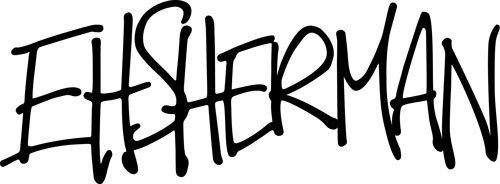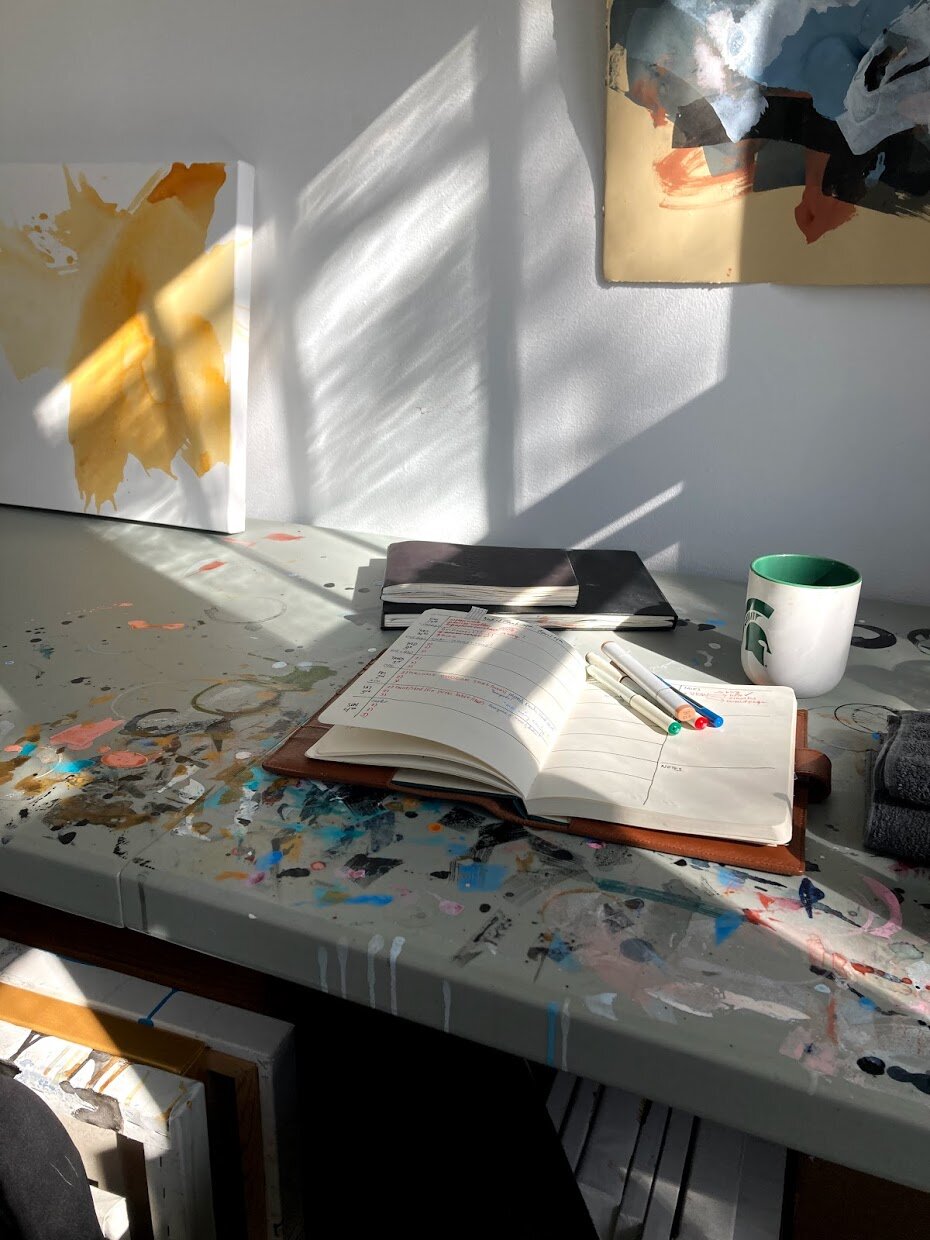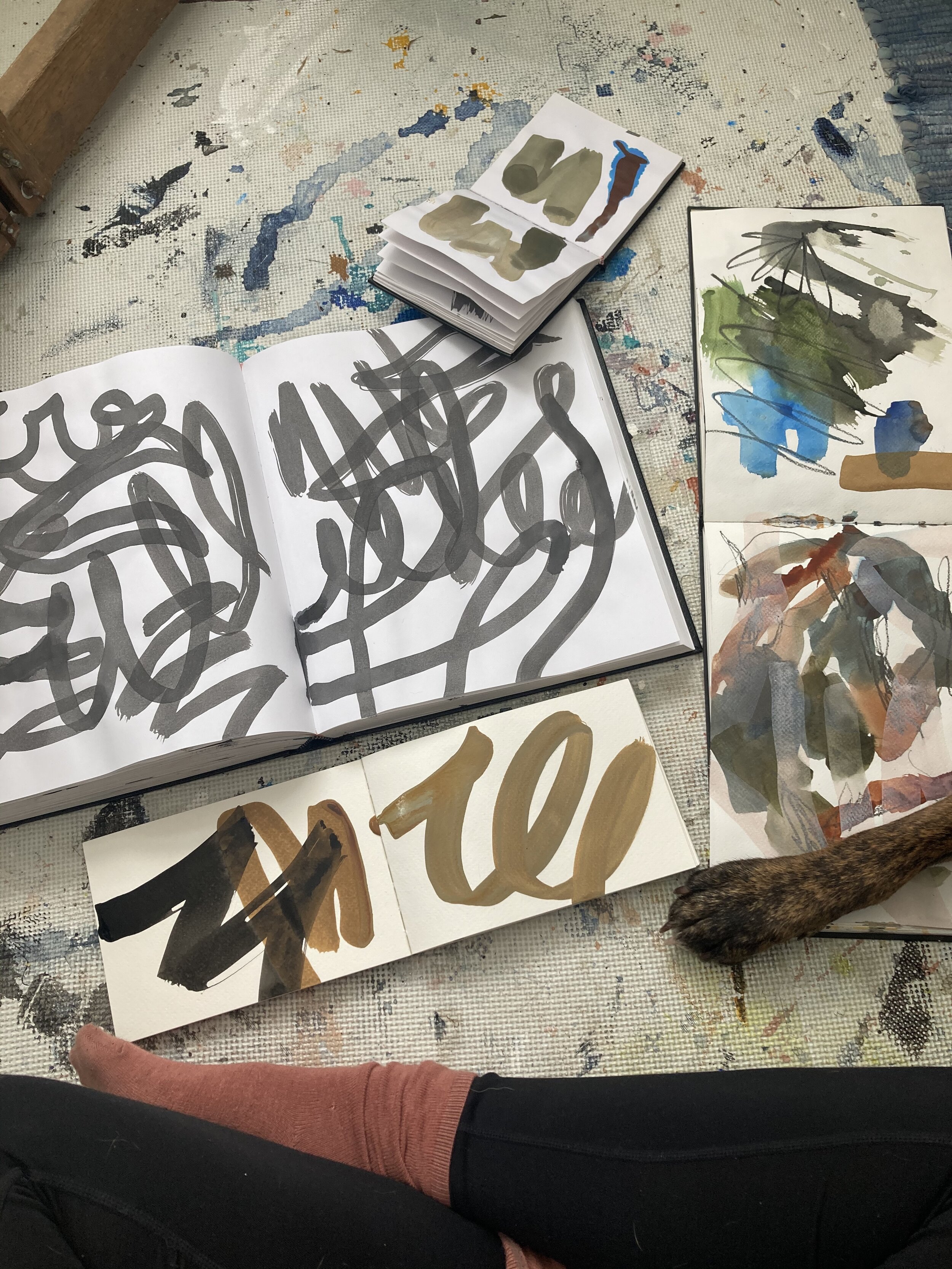Seasons of Work; how my work-flow has changed in the pandemic
* Note * Please, please, please, if you are able, go get vaccinated. So many people have lost so much/everything to this virus. It’s real, it’s serious and we have a way to stop it - please go get the shot(s).
Here are some resources;
It’s been interesting (at least, to me - maybe not to anyone else!) to step back and see what life in this pandemic has done to parts of my process. I can’t see all of it currently as we are still very much IN this pandemic, but patterns have slowly started to emerge.
The early pandemic days in the studio started as a frenzied mess. I was trying to make use of the extra time quarantining afforded me because if not, that extra time would be wasted and then I am a bad artist.
You can imagine how successful painting with that energy was.
(Narrator’s voice; it wasn’t.)
It took me a while to let go of the desire to harness some pandemic-residency vibe. To tell myself that we are living through some utterly weird and terrifying times and that extra time wasn’t necessarily best spent painting or other art-tasks. That I could use some time to process too.
In detaching myself from my ‘Before-Times’ schedule of brainstorming, creating, documenting, posting and shipping, all sandwiched between shows (cancelled), travel (cancelled), or other out-of-the-studio moments (severely decreased) I was able to watch a more organic, slower process start to become apparent. Less fits and starts, less following one project through each phase, more seasonal.
A season of creation.
A season of documentation.
A season of making the work public, sharing it and sending it to its new home.
Right now I’m firmly in the midst of creation. I’ve been making a lot of new things, some more successful than others, but the key is I’m making.
Instead of needing to stop to prep for a show or trip, I’m just going to ride this painting wave until my energy shifts back to the computer, to the camera and getting things ready for my website. Then onto the selling part, then to a new addition - rest and reset.
I’ve gone about two or so cycles with this pattern of making work, and thus far it’s been a welcome shift. Once life starts to get back to normal I know it will be hard to keep it - but for now I’m happy to exist in these seasons.
On Sharing Old Work;
(Big thanks to all the artists/collectors who took the time to chat with me about how they feel about seeing/sharing old work! If you want to join in the conversation leave me a message below or follow along on instagram!)
One of the (many!) reasons for my site re-design was to allow easier access to my older work. On the previous version of my site it was there… sort of? Definitely not able to be found without several specific links or lots of digging/clicking. Which was not my intention, just merely the result of lots of little updates moving older things out of view.
Why showing past work is important:
If you’re anything like me, keeping things compartmentalized is a really important part of my process. (Like keeping separate sketchbooks for different endeavors. See: A Look Into My Composition Book)
So, for a while I was comfortable showing a small, super-curated collection of my super-current work. Like a French/Capsule wardrobe, but for my art. And yes, while it presents a quick, easily-understood snapshot of exactly what I’m interested in at the moment, it doesn’t offer any clues to the path ahead or address anything I’ve already explored.
The current work is just out there, free-floating without information on how it got there or any hints as to where it might be going.
From collectors to galleries, to viewers just interested in what you are making, giving them the access to that history is a great way to share the process and enthusiasm for what we do - without having to state it. Even if the past work is different from what’s being made right now, it’s important to show that things are being made.
Like this 10 x 10 from 2015. Is it what I’m working on now? Clearly, no. But a lot of the same motion, contour and linework is still in play in my current work. Also this was exhibited during Miami Art Basel - which is something fun to share too.
Here’s a peek at some REALLY old work. (Ink on paper, for an auction, from like 2012….)
How far back is necessary?
This changes from artist to artist, there’s no magic number of works that has to be displayed.
Factors like time spent working and style exploration play a big part in deciding what/when gets shown. For me I went back to 2015, which is about the time when I felt my work starting to speak to the paintings I am making right now.
(Plus, at 2021 - I felt like 5 tabs would be enough to dig through. )
I debated adding an ‘early life’ tab for fun, to share some my favorite paintings from growing up - but I think I’ll save those for a blogpost instead.
As the feelings around ‘old’ work can be so personal and can differ extraordinarily between artists I thought I might see what instagram had to say.
I asked two questions; one of the artists and one of collectors and had some amazing conversations about old work. Thanks again to all of you who took the time to write me messages, it is always so wonderful to get to chat with you (whether I used your message or not!)
I don’t see it as older work looking from the outside in. It is your work!
When I find an artist I really like or am inspired by, I always scroll to the beginning of their Instagram to see how their work has changed and evolved. It’s always so interesting! I’m a long time follower of you and I love your older work, but the things you’ve been doing in the past year have been cool too. I guess I like seeing it all 🤗
I feel almost naked when I show old work. I hate leaving it out for the world to see, when it feels so far removed from what I’m doing now.
-Anonymous
I think showing previous works to be very important. It shows growth and direction. As well as giving your audience a better understanding of who you are as an artist and who you want to be.
As an artist, I feel like showing my older work shows the progression of my style over time, and how my work is always evolving and changing while still being inspired by older work of mine.
I totally understand Anonymous’s gut feeling about sharing past work, it can be really scary to show the world something we believe we have ‘moved past’.
It is an act of real vulnerability to let others see where we came from. But in the case of our work, our art - it’s so important to leave that visual history trail behind. (To a point, no one is demanding the macaroni collage for 2nd grade… though I always love to childhood projects!)
What do you think? As a collector do you enjoy seeing earlier pieces? Or, as an artist how do you feel about sharing those pieces?
Early Morning Mark-making
When you’ve been up since 4am and can’t focus, simple repetitive movements in left over paint are just what the doctor ordered.
I usually sketch a bit when I first settle into the studio - it helps warm up my fingers and arms (ESPECIALLY when it’s 58 and the space heater hasn’t quite caught up yet…) but every so often the entire day ends up being spent in those pages.
Days like today, where I found myself wide awake at 4 am - and now there’s not enough caffeine in the world to get me out of this haze.
So, marks in leftover paint it is.
I’ll use work in a few different methods; occasionally I just close my eyes and let the muscles of my arm pull the brush along the page, or I’ll pick an object and use it for some blind contours, other times I’ll just focus on the brush pressure and placement of the bristles, which can make for calligraphic-esque marks.
Either way, the point is to disconnect from anything analytical and just let the brush make it’s marks.
This is also where having multiple sketchbooks or sheets of sketch paper come in really handy. As one set dries, I can move onto another.
When I’ve decided I’ve finished with these it can be helpful for my process to lay these out and look at them for a while. I’ll note moments that call for more attention, lines that jump out at me as something to work with more (or to ignore), transparencies that I want to explore… etc. Scribbling these down somewhere, or sketching out what is interesting can set me up for a much more productive session the next time in the studio.
My Process; Photographing Work
*** This isn’t going to be about the technical aspects of photographing work. There is a plethora of great information online about how to properly and professionally photograph your work and I would just be rehashing it.
Here are two resources for the technical side of things;
I want to focus more on the importance of photographing your work (or simply seeing it) out of the studio, out of the context of it’s creation and in an intended atmosphere - be it on a wall of a home or office or gallery. ***
Where i photograph work currently - StudioStudioA2!
I started doing this back in Miami when I was a babyartist. Our condo building had a lounge up on the 11th floor that I could usually have all to myself. I would scope it out first and then bring up paintings and drawings in various states of done-ness to photograph separately and as collections.
Those windows…..
So much white.
I would usually begin with each painting on it’s own, photographed in a few different places if I’m able. This practice gave me an immense amount of insight into the work; ideas about the paintings became clear in these limited palette-surroundings. Things that would have been harder to glean in the mess and chaos of my teeny tiny artspace jumped out at me. Like little meditations on each one, without the distraction of the other work/the rest of our apartment.
Once each painting had their own little photoshoot (I would use several cameras, phone/DSLR/instax) I would start to combine works, to see what stories they had to tell each other. Sometimes collections would emerge from pieces I previously thought were unrelated. Sometimes I’d see holes, movement and colors that still needed to be addressed. I’d usually always learn something about the next steps, next direction to take the pieces. Or my favorite response from the paintings; I’m done, leave me be.
This practice is still very much a part of my process, though I’ve had to do some digging to find places to photograph work now that I don’t have access to a fancy lounge. The only rule I need to follow for the process to work is ; not in my studio.
Not around my other work, or supplies or sketches. To remove the pieces entirely is what works best for me.
Places I’ve tried (and you can too!*)
*with proper safety measures in place, because, you know, pandemic. Or better yet, make a plan now so that when we’re all safe and vaccinated you know where to go/who to call to set things up!
Reach out! Do you have a friend with a cool house? A nice big wall? Maybe send them a message and see if you can borrow it for an afternoon of photography. This can be especially handy if you want to show your work in the homes of your customers, it will give them an idea of how it can be styled/displayed.
Do you go into an office? Perhaps they have a nice minimal conference room with big windows you can use to set up work. Especially if you are trying to find more clients in the business sector - catering your imagery to where you want your work to live will help your prospective buyers imagine your work in their space.
School stairwells can be amazing little spaces of contrast between walls/floors if you’re going for a stark ‘gallery’ type image. If you find yourself on the campus of a college perhaps check out a few hallways, a good white wall and gleaming cement floor are always nice backdrops for photos.
(( Just keep in mind that good lighting is literally everything when photographing work, so either bring your own kit (which is usually fine in homes/offices but can be a little tricky if you are out in a public/semi-public atmosphere like a school) or make sure you have good windows in your immediate vicinity. ))
Rentable locations! Check your area for photography studios that might have rooms for rent. This is a really good option if you’re starting to consider prints, or wanting to control all aspects of the photo, as these studios usually have high-quality lighting kits and all sorts of the right equipment to produce perfect photos.
Without access to that fancy lounge in Miami I floundered for a bit looking for a good room to take pictures in, borrowing garage space/storage space/cool basement walls for photos. But with the opening of StudioStudio here in Ann Arbor, thankfully, I’ve got my go-to spot back again and many more photoshoots of artwork will be happening in the future.
Happy 2021 friends <3
I hope you all had a nice start to 2021. Our NYE celebration was a lot different this year - but not necessarily worse by any means. My husband and I made tacos, played games and enjoyed not having to decide who had to drive home from the festivities this year. If anything I think I prefer this quieter more introspective entry into the changing year, especially after everything that has happened recently.
I have to keep reminding myself however, that just because we’re leaving 2020 behind, doesn’t mean that everything will get magically better. I’m hopeful, but trying to stay rooted in reality too.
I’ve made a few little paintings over the break and am finishing up one larger work - but I spent the majority of time thinking about the direction I’ve been following for the last half of the previous year. It’s easy for me to get swept away by new marks and not question their purpose - so I’ve been taking lots of notes and considering the reasonings behind their placement and movement.
Again, really enjoying this quieter start to the year.














